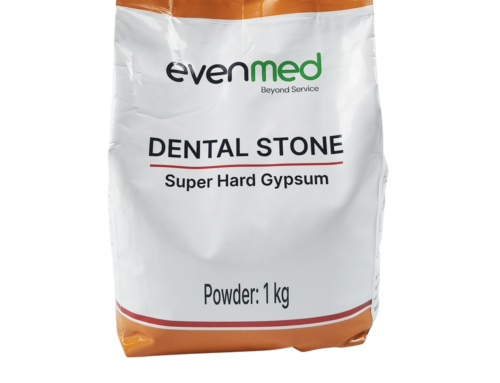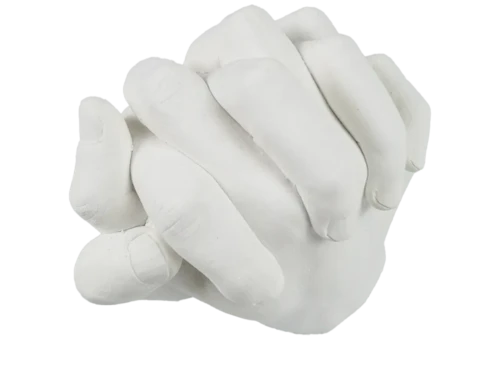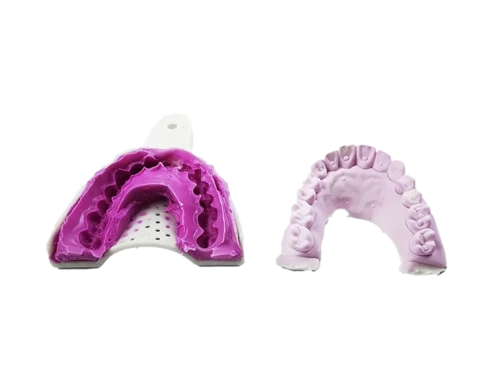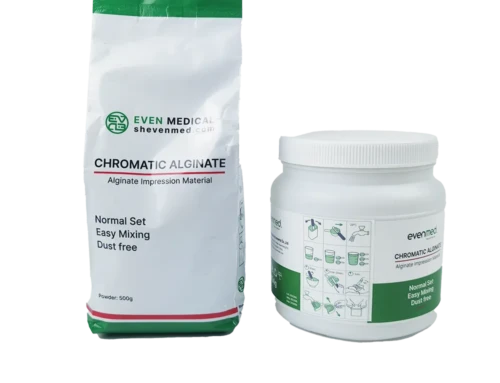プロジェクトの説明
シリコーン印象材
Vinyl polysiloxane, crosslinking agent and platinum catalyst, etc.
E50013
1* Base
1* Catalyst
1* Light Body
2* Spoons
6* Mixing Tips
6* Intra-oral Tips
- Orthodontic Material
- Maxillofacial Prosthesis
- Denture Processing
- Model Making
- Die Making
- Fixed Restorations
- Reproductions of Fractured Teeth
- Recording Occlusal Relationships
- Total Jaw Impressions
- Single, Quadrant and Full Dentures
- Fixed Bridges, Crowns, Inlays, Onlays, and Overlays
- Impressions for Implants and Functional Impressions of Complete Prostheses
12boxes/ctn or customized
2 Years
概要:
Silicone impression materials are widely used in dentistry for creating detailed and accurate impressions of the oral cavity. These materials are elastomeric, meaning they are flexible and can return to their original shape after being stretched or compressed.
![]()
組成・成分情報:
The product is a poly-type silicone rubber impression material, which is composed of vinyl polysiloxane, filler, pigment, crosslinking agent and platinum catalyst.
Applications:
Silicone impression materials are used for a variety of dental procedures, including:
Impressions for fixed and removable prostheses like crowns, bridges, and dentures, orthodontic models, mouth guards, and bleaching trays, implant impressions.
利点:
The benefits of using silicone impression materials include:
1. Excellent dimensional stability and detail reproduction
2. High tear resistance
3. Non-rigid and irreversible, ensuring they maintain their shape once set
4. Odorless, clean, and easy to mix
5. Hydrophilic options available, which are highly compatible with plaster
6. Can be disinfected without compromising impression quality
Instructions for Use:
2. Take out the materials and, at room temperature, use a spoon to take an equal amount of base (purple) and catalyst (white) for mixing.
3. Mix the two components together using your fingertips, kneading them for at least 30 seconds until they are fully blended.
4. Initial impression: Place the mixed material onto the tray and insert the tray into your mouth, pressing it against your teeth with your fingers.
5. Taking the impression: Once the material has solidified, remove the tray from your mouth.
6. Trim the initial impression: Clean and dry the initial impression, use a carving knife to remove any incomplete areas, and create a pressure escape groove.
7. Inject the light body material: Ensure that the mixer is properly immersed in the impression material to avoid bubble formation.
8. Secondary impression: Place the tray containing the light body material slowly and accurately into the patient’s mouth.
9. Completion: After the material has fully solidified, remove the tray. Keep the impression for 30 minutes before disinfecting it.
Contraindications:
注意:
There are certain precautions or cautions that should be taken when using these materials:
1. Hydrophobic Nature: Silicone impression materials, including condensation silicones, have an inherent hydrophobic nature. This means they repel water, which can make it challenging to get an accurate impression if the oral field is not kept dry during the impression-making process.
2. Disinfection: Silicone impression materials can be disinfected without reducing the impression quality, which helps control cross-infection[1]. However, it’s important to note that some disinfectants can affect the tear strength of the material[3]. Therefore, it’s crucial to follow the manufacturer’s instructions for disinfection to ensure the integrity of the impression.
3. Thermal Sensitivity: Polyvinyl siloxane materials, a type of silicone impression material, are thermally sensitive. The warmer they are, the faster they set. If overheated, they may not recover to their normal setting time even after cooling.
4. Contamination: Before they set, silicone impression materials are susceptible to contamination. Anything that interferes with the catalyst (preventing cross-linking of the material) causes the material to remain tacky.
5. Use with Gloves: It’s recommended not to mix silicone impression materials with gloves, as the chemicals used in the manufacture of some gloves, particularly latex gloves, can inhibit the polymerization of the material.
6. Patient Comfort: While silicone impression materials are generally safe and comfortable for patients, some patients may experience discomfort or an allergic reaction. If a patient reports discomfort, the dentist should stop the procedure and assess the patient’s condition.
7. Storage: Silicone impression materials should be stored in a cool, dry place to maintain their properties and prolong their shelf life[1].
8. Use with Plastic-Mesh Trays: It is advisable to refrain from using plastic-mesh trays with silicone impression materials as they possess a high degree of flexibility, which may result in the deformation of the impression.
In conclusion, while silicone impression materials are highly beneficial in dentistry, it’s important to use them correctly and take certain precautions to ensure accurate and safe results.
次のプロジェクトのための正確な見積もりを得る
医療用消耗品や研究用消耗品など、複雑なプロジェクトでもシンプルなプロジェクトでも、6時間以内に正確な見積もりをお出しします。




